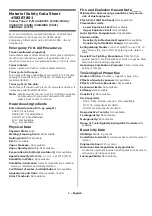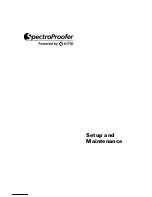
Instructions for Use
– SCHMIDT
®
Flow Sensor SS 20.600
Page 16
Quasi-parabolic flow profile
The system length is large compared to the cross-section surface and
the flow velocity is so high that the ratios correspond to that of the cir-
cular pipe. This means that the same requirements apply here to the
installation conditions.
Since the situation is similar to that in a pipe
10
, the volume flow in a
square chamber can be calculated by equating the hydraulic diameter
of both cross-section forms. The result for a rectangle
“R” according to
is a hydraulic “pipe diameter” D
H
:
b
R
: Width of rectangular channel
h
R
: Height of rectangular channel
D
H
: Hydraulic pipe diameter
𝐷
𝐻
=
4∙𝐴
𝑅
𝑈
𝑅
=
4∙(𝑏
𝑅
∙ℎ
𝑅
)
2∙(𝑏
𝑅
+ℎ
𝑅
)
=
2∙𝑏
𝑅
∙ℎ
𝑅
𝑏
𝑅
+ℎ
𝑅
Figure 3-5
According to this, the volume flow in a shaft is calculated as:
𝐴
𝐻
=
𝜋
4
∙ 𝐷
𝐻
2
=
𝜋
4
∙ (
2 ∙ 𝑏
𝑅
∙ ℎ
𝑅
𝑏
𝑅
+ ℎ
𝑅
)
2
= 𝜋 ∙ (
𝑏
𝑅
∙ ℎ
𝑅
𝑏
𝑅
+ ℎ
𝑅
)
2
𝑤
̅
𝑁
= 𝑃𝐹 ∙ 𝑤
𝑁
𝑉̇
𝑁
= 𝑤
̅
𝑁
∙ 𝐴
𝐻
= 𝑃𝐹 ∙ 𝜋 ∙ (
𝑏
𝑅
∙ℎ
𝑅
𝑏
𝑅
+ℎ
𝑅
)
2
∙ 𝑤
𝑁
b
R
/ h
R
Width/height of the square chamber [m]
D
H
Hydraulic inner diameter of the chamber [m]
A
H
Cross-section area of the equivalent pipe [m
2
]
N
w
Maximum flow velocity in the middle of the pipe [m/s]
N
w
Average flow velocity in the pipe [m/s]
PF
Pipe profile factor
N
V
Standard volume flow [m
3
/s]
Typical applications are:
o
Ventilation shaft
o
Exhaust air duct
10
The profile factors are equal for both cross-section forms.
















































